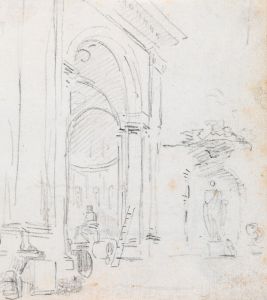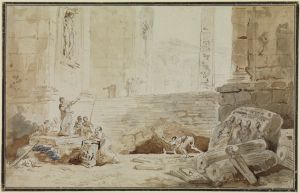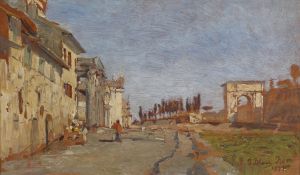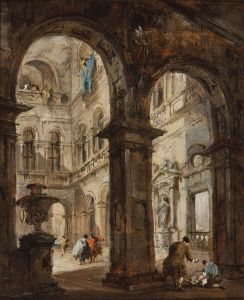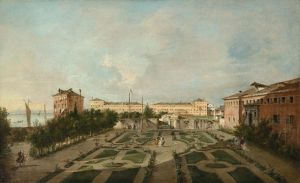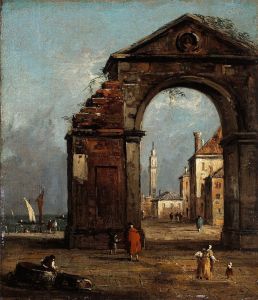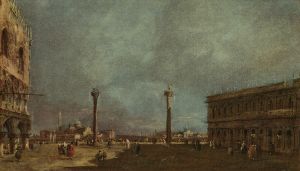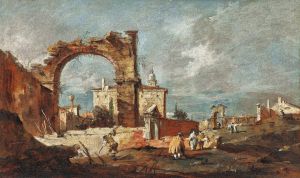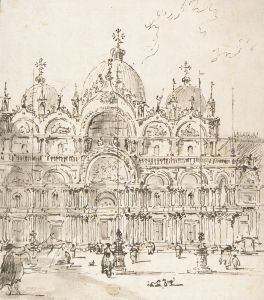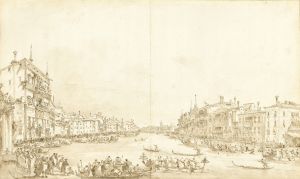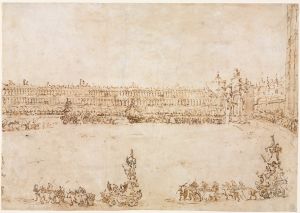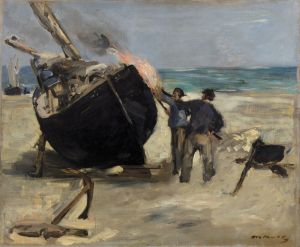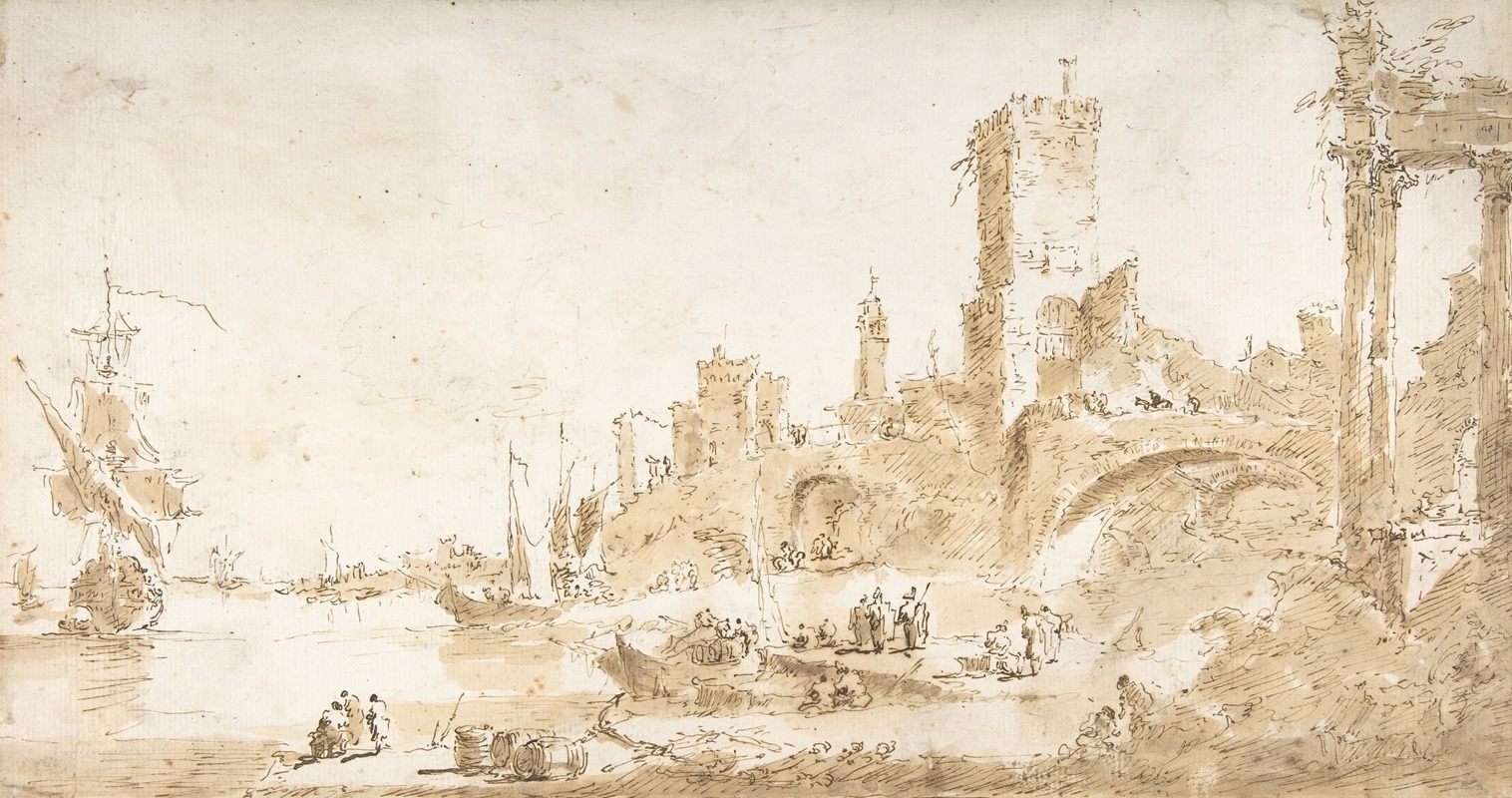
Capriccio with a Seaport and Classical Ruins
A hand-painted replica of Francesco Guardi’s masterpiece Capriccio with a Seaport and Classical Ruins, meticulously crafted by professional artists to capture the true essence of the original. Each piece is created with museum-quality canvas and rare mineral pigments, carefully painted by experienced artists with delicate brushstrokes and rich, layered colors to perfectly recreate the texture of the original artwork. Unlike machine-printed reproductions, this hand-painted version brings the painting to life, infused with the artist’s emotions and skill in every stroke. Whether for personal collection or home decoration, it instantly elevates the artistic atmosphere of any space.
"Capriccio with a Seaport and Classical Ruins" is a painting by the Italian artist Francesco Guardi, who was an important figure in the Venetian school of painting during the 18th century. Guardi is best known for his vedute, or detailed and often idealized views of Venice, as well as his capricci, which are imaginative compositions that combine architectural elements from different places and times.
This particular painting, "Capriccio with a Seaport and Classical Ruins," exemplifies Guardi's skill in creating fantastical landscapes that blend reality and imagination. The work features a seaport scene populated with classical ruins, a common theme in capriccio paintings. These ruins are not based on any specific historical site but are rather an amalgamation of various classical architectural elements, such as columns, arches, and statues, which evoke the grandeur of ancient Rome and Greece.
The painting is characterized by Guardi's distinctive style, which includes a loose, expressive brushwork and a keen attention to atmospheric effects. The use of light and shadow in the painting creates a sense of depth and enhances the dreamlike quality of the scene. The seaport is bustling with activity, with figures engaged in various tasks, adding a lively human element to the otherwise serene and timeless setting.
Francesco Guardi was born in Venice in 1712 and was part of a family of painters. He trained under his older brother, Giovanni Antonio Guardi, and later developed his own style, which was influenced by the works of Canaletto, another prominent Venetian vedutista. While Canaletto's works are known for their precise and detailed representation of Venice, Guardi's paintings are more atmospheric and impressionistic.
"Capriccio with a Seaport and Classical Ruins" reflects the 18th-century European fascination with the classical past and the romanticization of ancient ruins. This interest was part of a broader cultural movement known as the Grand Tour, during which wealthy young Europeans traveled to Italy to study its art, architecture, and history. Paintings like Guardi's served as souvenirs of these journeys and as expressions of the travelers' cultivated tastes.
The exact date of the painting is not definitively known, but it is generally attributed to the latter part of Guardi's career, when he was producing many of his most famous works. The painting is now housed in a museum or private collection, where it continues to be appreciated for its artistic merit and historical significance.
In summary, "Capriccio with a Seaport and Classical Ruins" is a notable example of Francesco Guardi's work, showcasing his ability to blend reality and imagination in a way that captures the viewer's imagination. Through his use of classical elements and atmospheric effects, Guardi creates a timeless scene that reflects the artistic and cultural currents of his time.





